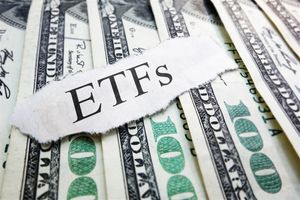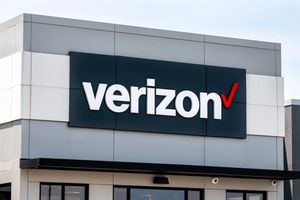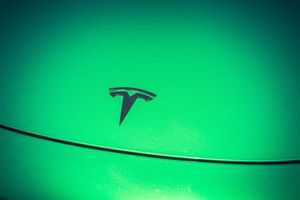Tesla Destination and Tesla Supercharger Rank Highest in Respective Segment
Despite continued uncertainty surrounding National Electric Vehicle Infrastructure (NEVI) funding, the electric vehicle (EV) public charging industry is showing strong signs of resilience and progress, according to the J.D. Power 2025 U.S. Electric Vehicle Experience (EVX) Public Charging Study,SM released today. Non-charging visits at public EV chargers (meaning an owner visited a charger but was unable to charge their vehicle) have hit their lowest level in four years, a clear indicator that reliability and customer experience are steadily improving. This milestone reflects the industry’s collective commitment to advancing public charging infrastructure even in the face of federal funding delays and shifting political landscapes.
In this year’s study, satisfaction with DC (direct current) fast chargers is 654 (on a 1,000-point scale), a 10-point decrease from the same period a year ago, with notable declines in factors related to payment and cost. Satisfaction with public Level 2 charging has declined to 607, a 7-point decrease year over year. The study also reveals a notable improvement in charging reliability, despite lower overall satisfaction, with only 14% of all EV owners saying they visited a charger without successfully charging their vehicle—a significant decrease of 5 percentage points from 2024.
“In the absence of NEVI funding, the industry is experiencing a concerted effort among various stakeholders in the EV ecosystem—particularly from automakers and charging networks—to improve the public charging experience for customers,” said Brent Gruber, executive director of the EV practice at J.D. Power. “With or without the federal funding, NEVI guidelines have made their mark by establishing a playbook for industry success. While overall satisfaction scores decline this year, our data shows clear improvement in the reliability and success of public charging—a promising sign of progress for the industry. As part of its analysis, J.D. Power also monitors public charging performance across the country by measuring failed charging attempts and availability, as well as providing critical data on where the customer experience is improving and where challenges remain.”
Following are some key findings of the 2025 study:
-
EV owners aren’t thrilled with cost of charging: Satisfaction with cost of charging among users of both Level 2 and DC fast chargers declines this year to 459 (-16 points) and 430 (-16), respectively. For users of DC fast chargers, the cost of charging—one of 10 factors on which the study is based—is the least satisfying aspect overall. “Part of the decrease is due to non-Tesla owners using Tesla Superchargers, which deliver a far less satisfying user experience relative to the costs incurred, in comparison to those of Tesla owners,” Gruber said. “Additionally, in previous years, many DC fast charging networks kept prices low as they developed their market presence, while manufacturers regularly offered free charging incentives with vehicle purchases. However, as the infrastructure market evolves and electricity rates rise, charging prices have increased significantly in some cases, directly affecting the overall EV ownership experience.”
-
OEM-branded DC fast charging networks show strong early performance: Tesla’s Supercharger network continues to lead the DC fast charger (DCFC) segment in customer satisfaction with a score of 709, despite a 22-point decline from last year. However, non-Tesla automaker-operated networks—including the Mercedes-Benz Charging Network, Rivian Adventure Network and Ford Charge—collectively earn a satisfaction score of 709, on par with Tesla. These networks were not eligible for rank consideration in this year’s study due to their limited footprint, but early performance suggests manufacturers are successfully applying lessons from Tesla’s brand-level ecosystem. In comparison, third-party DCFC providers, which have the added challenge of targeting a broader audience, average a score of 591.
-
Non-charge visits and availability vary by location: To better understand the EV charging experience, J.D. Power monitors non-charge visits and availability at public stations nationwide. The findings reveal that the Pacific region has the highest rate of non-charge visits (21%), with 12% of customers also reporting wait times for an available charger. In contrast, the East South Central region has the lowest incidence of both issues, just 7% for non-charge visits and 5% for wait times. Among major cities, EV owners in Seattle (25%) and Los Angeles (24%) report high rates of unsuccessful charging attempts, while a greater share of drivers in San Francisco (18%) and Denver (14%) experience wait times to access chargers. By far, the most common reason for non-charge visits is the charger being out of service or not working properly, which affects 60% of failed charging visits.
- First-time EV owners more satisfied than veteran EV owners: Across both public charging segments, satisfaction is higher among first-time EV owners compared with their more experienced counterparts. Overall satisfaction is 610 among first-time EV owners using Level 2 chargers and 592 among veteran EV owners. The satisfaction gap between newbies (654) and veterans (648) is smaller among DC fast charger users, however. A possible explanation for this trend is that veteran EV owners have higher expectations for technological advancements that aren’t quite being met by current vehicle and charger offerings.
“While the expansion of DC fast chargers remains important, the data strongly indicates that increasing speed alone is not the solution to public charging challenges,” Gruber said. “Improving reliability, ease of use and addressing cost concerns are among a multitude of factors at play that must be prioritized to enhance the overall public EV charging experience. Faster does not always mean better.”
Study Rankings
Tesla Destination ranks highest among Level 2 charging stations for a second consecutive year, with a score of 661. ChargePoint (628) ranks second.
Tesla Supercharger ranks highest among DC fast chargers for a fifth consecutive year, with a score of 709. Red E (668) ranks second.
See the rank chart for each segment at http://www.jdpower.com/pr-id/2025086.
The U.S. Electric Vehicle Experience (EVX) Public Charging Study, now in its fifth year, measures EV owner satisfaction with two types of public charge-point operators: Level 2 charging stations and DC fast charger stations. Satisfaction is measured across 10 factors: ease of charging; speed of charging; physical condition of charging station; availability of chargers; convenience of this location; things to do while charging; how safe you feel at this location; ease of finding this location; cost of charging; and ease of payment.
The study is driven by a collaboration with PlugShare, the leading EV driver app maker and research firm. The study examines consumer attitudes, behaviors and satisfaction, setting the standard for benchmarking the overall experience of public EV charging. The 2025 study included 7,428 owners of battery electric vehicles (BEVs) and plug-in hybrid electric vehicles (PHEVs). The study was fielded from January through June 2025.
For more information about the U.S. Electric Vehicle Experience (EVX) Public Charging Study, visit https://www.jdpower.com/business/electric-vehicle-experience-evx-public-charging-study.
About PlugShare
Based in El Segundo, Calif., PlugShare maintains the most comprehensive census of EV infrastructure in the world. They make the PlugShare app for iOS, Android and the web, the most popular EV driver app globally, in use by most drivers in North America and nearly 10 million EV drivers in 150+ countries worldwide. PlugShare also provides sophisticated data tools, APIs, reports, custom consulting, and comprehensive research on EVs for automakers, utilities, charging networks, government, and the rest of the EV industry. It operates the world’s largest EV driver survey research panel, PlugInsights, now with over 125,000 members.
About J.D. Power
J.D. Power is a global leader in automotive data and analytics, and provides industry intelligence, consumer insights and advisory solutions to the automotive industry and selected non-automotive industries. J.D. Power leverages its extensive proprietary datasets and software capabilities combined with advanced analytics and artificial intelligence tools to help its clients optimize business performance.
J.D. Power was founded in 1968 and has offices in North America, Europe and Asia Pacific. To learn more about the company's business offerings, visit jdpower.com/business. The J.D. Power auto-shopping tool can be found at jdpower.com.
About J.D. Power and Advertising/Promotional Rules: https://www.jdpower.com/business/about-us/press-release-info
View source version on businesswire.com: https://www.businesswire.com/news/home/20250813555873/en/
Contacts
Media Relations
Geno Effler, J.D. Power; West Coast; 714-621-6224; media.relations@jdpa.com
Shane Smith; East Coast; 424-903-3665; ssmith@pacificcommunicationsgroup.com






